This morning I hopped on my bike, took the BART train to North Berkeley, and rode the Ohlone Greenway to participate in a 350 work party to restore and clean up Codornices Creek on the border of Albany and Berkeley. Organized by Friends of Five Creeks and Ecocity Builders, the task was to thin the willows, remove bindweed and fleshy white roots, and bag any trash. Being someone with a fascination for what comes out the other end of our consumer society I wasn’t surprised to end up in the garbage crew.
For those who may ask yourselves what this has to do with climate change, my brief explanation goes like this: Creeks and rivers are the arteries of the planet we live on. If they’re clogged, buried, polluted or cut off, the natural ability of the ecosystem to cleanse and restore itself is severely impeded. More creeks = less concrete = more biodiversity = less CO2.
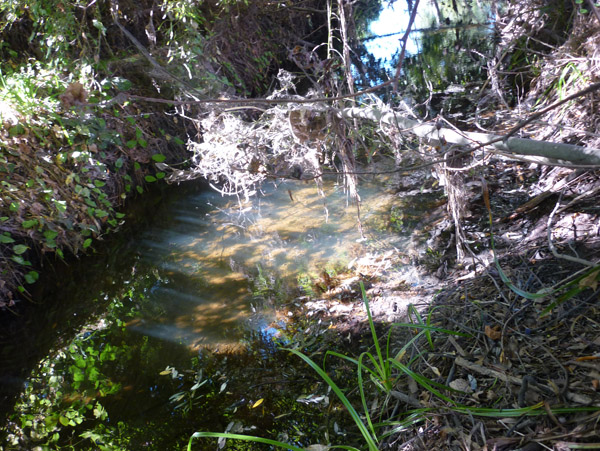
We had a really nice turnout, when everyone was counted there were eighty people. This was just the beginning:
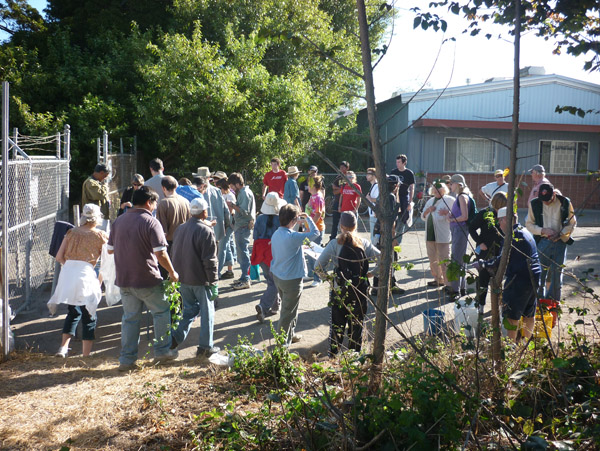
This was going to be no picnic, so we all got a pair of gloves first.
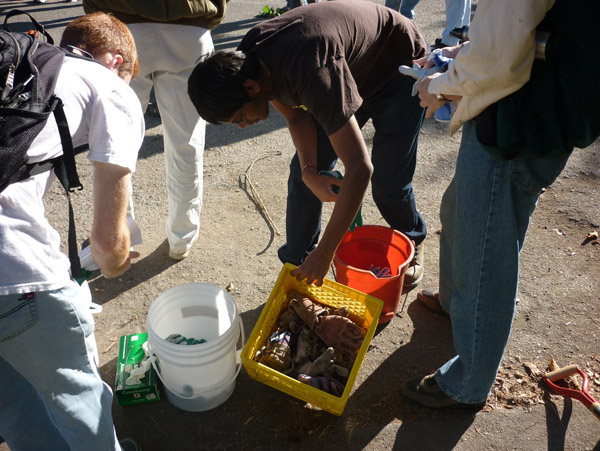
Susan Schwartz, President of Friends of Five Creeks gave us an introduction of the creek’s history and what to expect.

They even had a map of all the different spots we were going to branch out to in three groups.
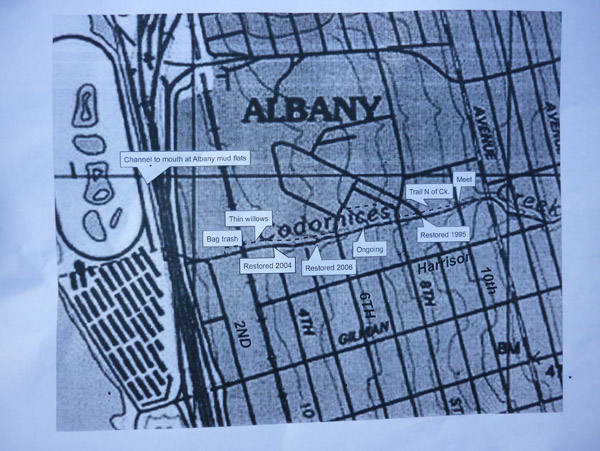
Our first stop was between 8th and 9th Street at a stretch of the creek that had been restored in 1995, thanks to the hard work and persistence of Richard Register and Ecocity Builders, who had been pushing to daylight the culverted creek section for many years before successfully talking the city into letting them liberate the creek from its concrete tunnel. Richard told us the story of how they were able to talk a bulldozer driver into doing the job for 25 Grand because it was such a unique project at the time and the contractor was fascinated by doing something he’d never done before.
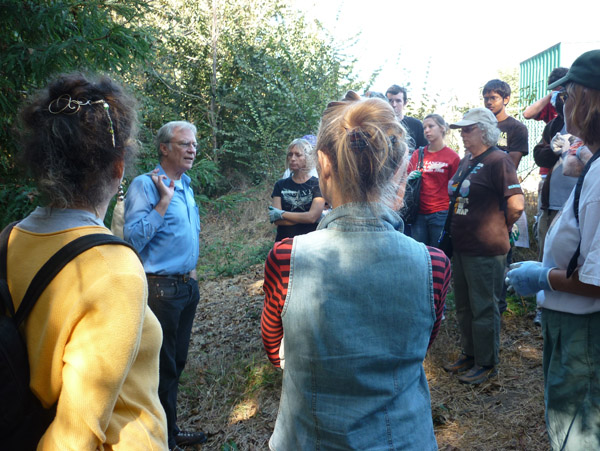
You can still see some of the concrete culvert slabs in the creek, a reminder of a drab past.
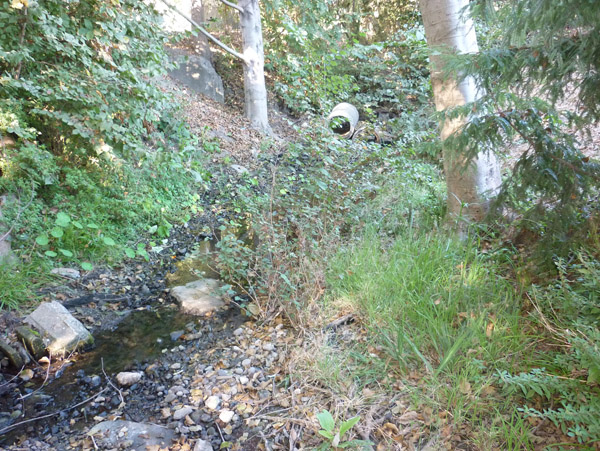
On the other side is the street that used to run right over this idyllic piece of nature.

Richard said that when it comes to climate, it’s the shape of the city that’s the biggest problem and that creeks are great opportunities to open up city landscapes and a wonderful way to start the process of reshaping cities. He pointed out some of the native plants they had planted over the years, as well as a little orchard where, in his words, “we teach children that fruit comes from trees.”
Next stop was a construction site between 6th and 8th Street, where the cities of Berkeley and Albany and the University of California are spending over 2 million bucks to restore two blocks of Codornices Creek.
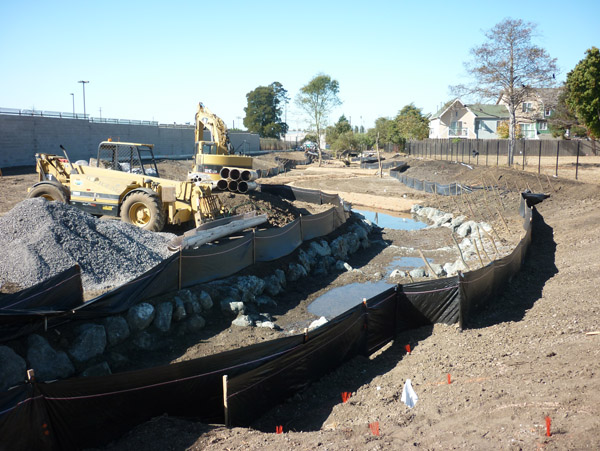
It’s such a cool story. While back in the 80s and 90s everybody was shaking their heads at Richard’s crazy idea to bring back the creek, and he and his friends literally had to do it themselves, there are now public works projects in cities all over the country restoring creeks. In this case, they’re integrating flood plains, digging a meandering course to recreate the creek’s natural balance between going downhill and carving switchbacks.
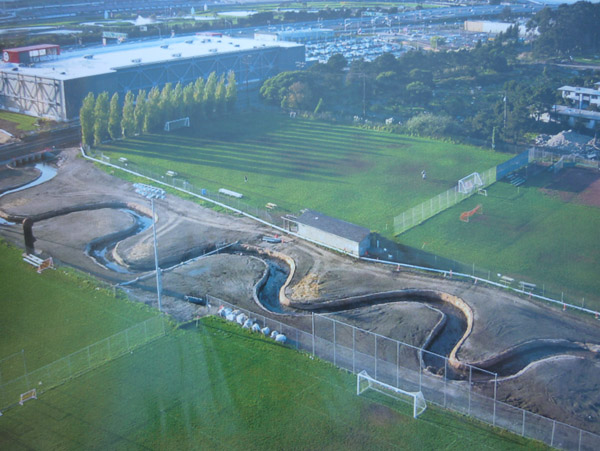
Next up, we had to cross the railroad tracks, woohoo!
We finally got to the work part of the tour, between 4th and 5th Street where the creek had been restored between 2004 and 2006. First, we picked up rakes, shovels, garden scissors, and plastic bags.

We walked by an area where another one of our groups was already busy trimming limbs and cutting trunks to keep the vegetation healthy, make room for other natives, and discourage illegal camping and dumping. (more on that just below). These guys also had the 350 sign, so everyone knew what’s up!
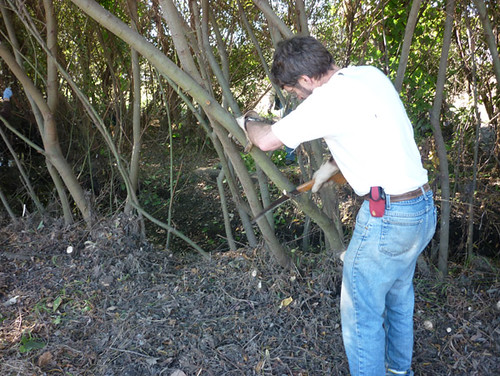


Then it was time to cross the railroad tracks to the other side. Cue scary music!
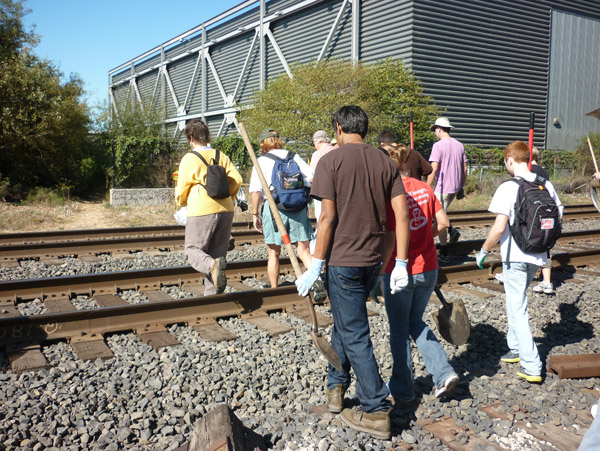
We had arrived at our destination. What used to be a creek flowing in a pipe under a trash incinerator, a slaughterhouse and a scrap metal dump was now a gorgeous stream flowing through beautiful native habitat in the middle of the city.
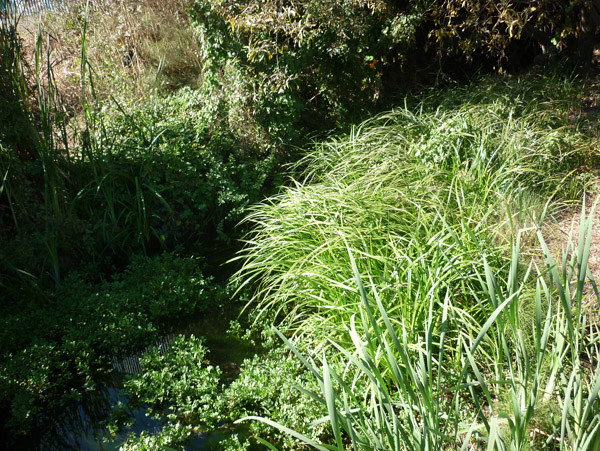
With one caveat – Mountains of abandoned urban encampments:
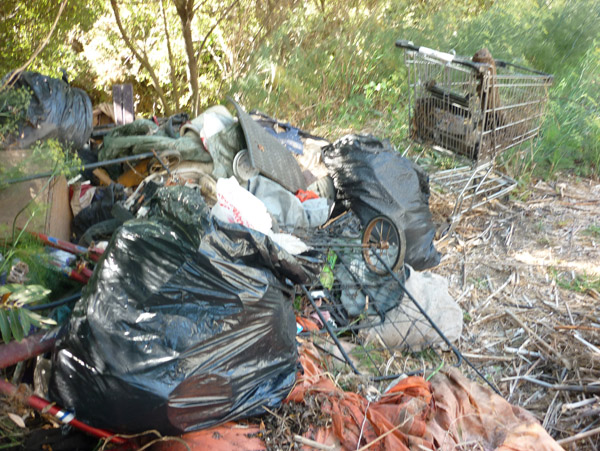
The task was clear: Pick up all the trash and carry it to the western exit gate where it could be picked up by a dump truck. And so we did.
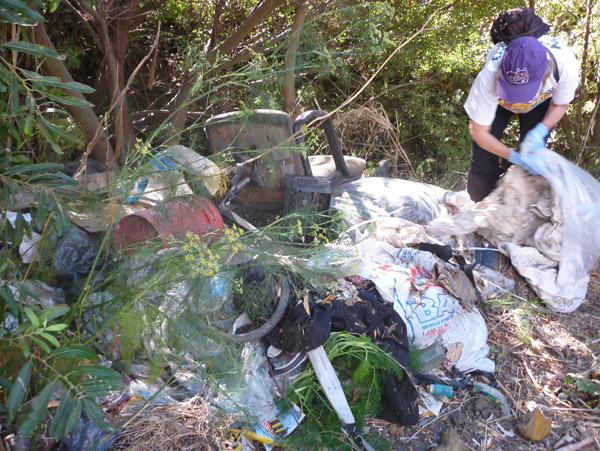
Little by little…

piece by piece…
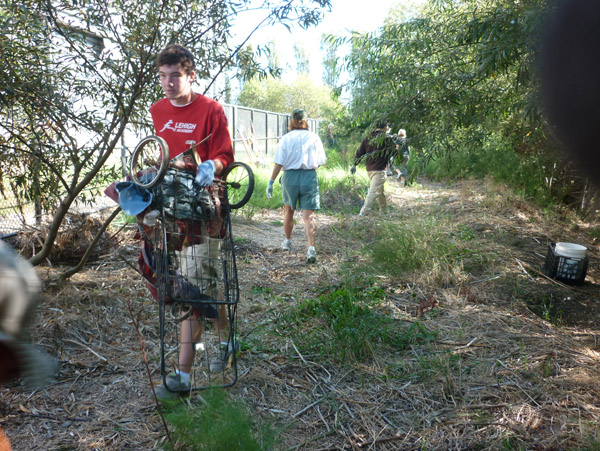
One by one…
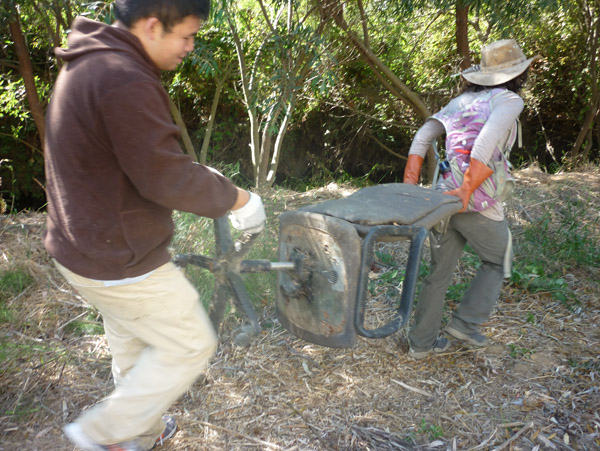
I even did a little video. Check out the sound of the birds!
[youtube=http://www.youtube.com/watch?v=GXYIxuJKmhQ]We had to watch out because not all the encampments were abandoned. In fact, we met one young man named Chad who had just set up his camp. This will be his home for the winter:
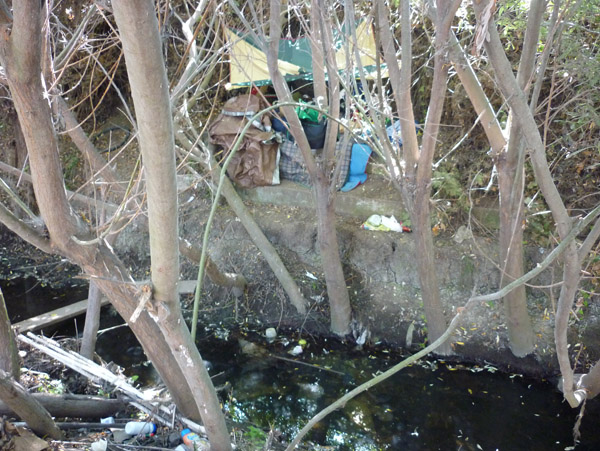
And here’s Chad’s kitchen:
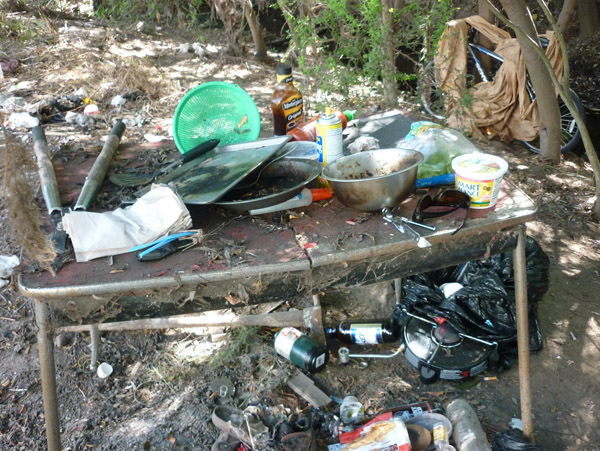
Chad’s living room:

Chad was actually there helping us out clearing out all the trash his predecessor had dragged in and abandoned. He said a lot of folks are pack rats and carry all kinds of stuff with them that they then can’t take care of anymore. Chad on the other hand brings only what he can carry on his bike, plus a few things he gets wherever he makes his camp. He told me he spent the summer at Lake Tahoe, rode his bike back to the Bay Area for winter, and is planning on heading to Oregon next summer. He loves being a camper, whether in the wilderness or in the city.

We tried to focus on the banks of the creek, because the garbage closest to the creek will be flushed into the water first when the rainy season starts.
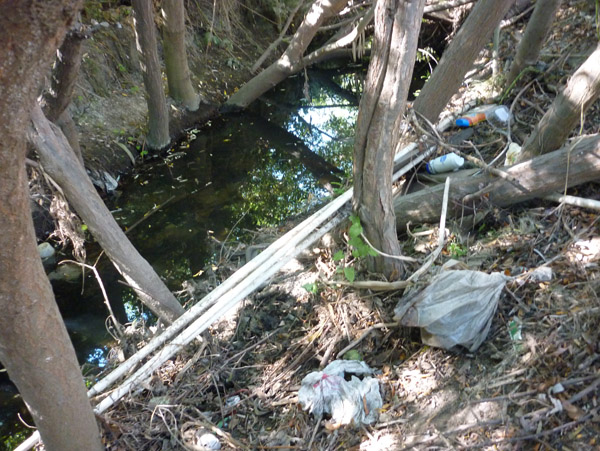
But behold, we actually cleared the whole area. In just one hour we moved a mountain of trash, and we got thee group photo to show for.
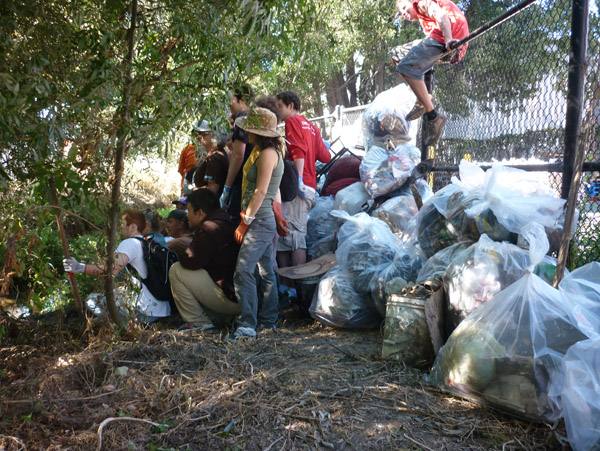
All that was left was for Chad to move into his beautiful, pristine creekside home.
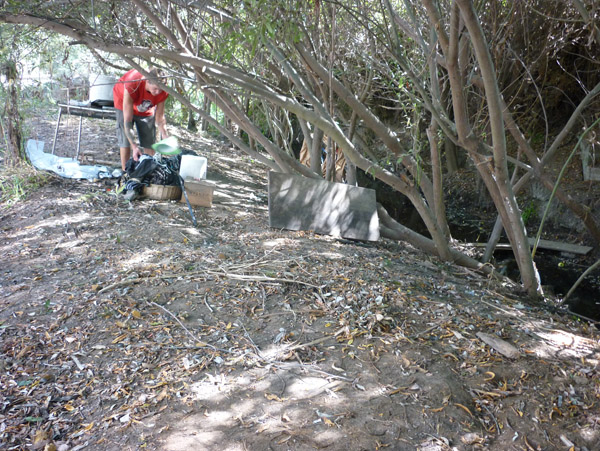
In the end, we all felt a sense of victory. Perhaps for ourselves, perhaps for Chad, but mostly for Codornices Creek and the magical earth it flows through.
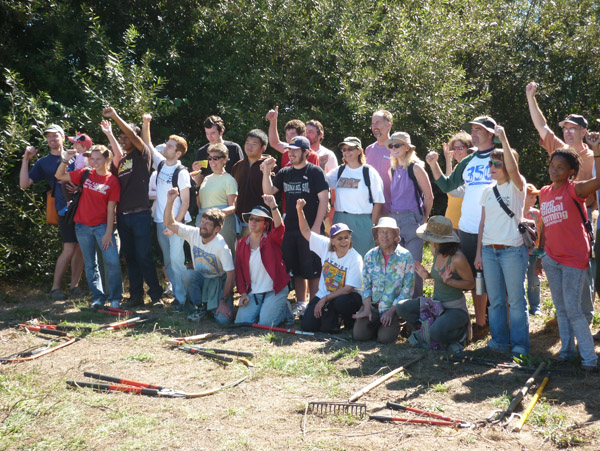
======
crossposted for the 10/10/10 series on Daily Kos
For more info visit Friends of Five Creeks and Ecocity Builders

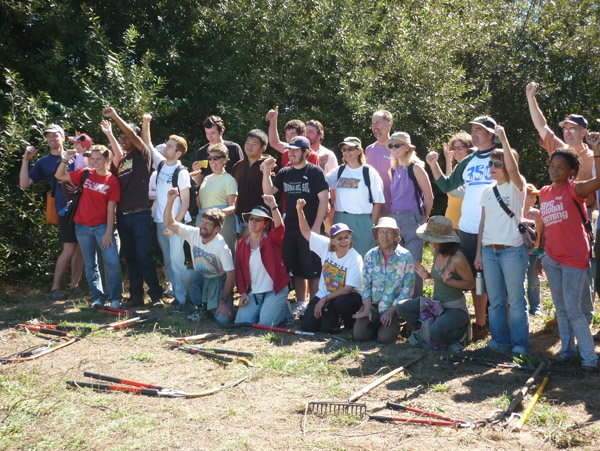

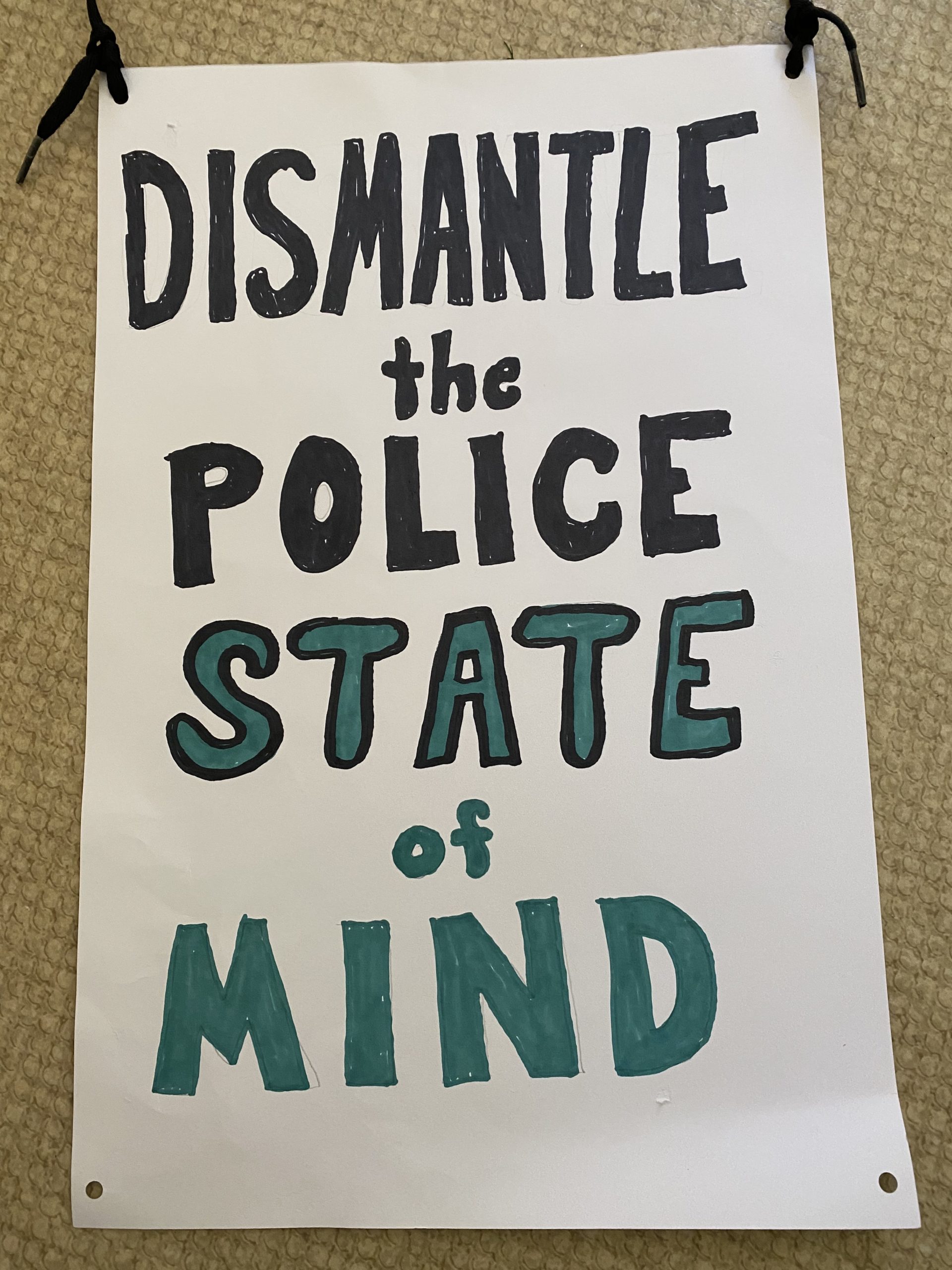
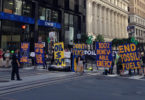



I LOVE your stories of bringing nature back, Sven, and the pictures add so much. The explanations re: creeks and streams are so interesting; I love learning how life works. Thank you.
You guys spread the goodness all over, and the streams and Chad were your beneficiaries. That must feel really good.
Thanks so much for swinging by, Pam. I really learned a lot today, in all respects, both nature and human. Dealing with all the trash and debris wasn’t necessarily pleasant, but it held in its midst the many layers of life and our humanness. I feel like I could have written much more in-depth on any of the different aspects of today’s experience, but it also feels good to just quickly throw it all out there without over-analyzing too much.
I can only imagine how amazing it must have been to have a creek-side resident there to help and to thank you all when the clean-up was complete. This project is very inspiring on so many levels. Thank you for bringing the human element to eco-system habitat restoration. We often forget or overlook the realities and choices of others.
I love that last line, “We often forget or overlook the realities and choices of others.” It’s so true, too often we have one-dimensional stereotypes etched into our brains about people that don’t really tell us much about who they are. “Homeless” only means that you’re without a home, and that’s not even accurate. Chad seemed perfectly comfortable in his home, and yet by our societal standards he would be considered homeless, with all the preconceived notions that entails. It’s like with any other stereotype we’ve created: Once we actually get to know someone personally we realize that underneath the categorized description dwells a wonderfully complex and multidimensional soul, reflecting back to us like a mirror.
Thanks for the story and photos. My next blog entry is going to be a link to YOUR blog entry to remind readers that folks are getting really dirty to benefit streams across (and under) America. The post will be up on 10/13 at http://www.thewritebeat.com.
Thank you Ruth, much appreciated. I’ll make sure to stop by.
Ditto what Ruth said! I’ll be posting today at http://alchemyfortheearth.com/ Thanks so much, Sven, for your words and your loving perspective!
That’s very kind of you Tracie. I really feel like I experienced some earth alchemy yesterday. : )
This is such a fantastic post, Sven. If you haven’t already, send it to 350.org to show them what your 10/10/10 event looked like on the ground.
Thanks Barb. I did send it to 350.org. I hope to see some reporting on your 10/10/10 event, did you upload any pics?